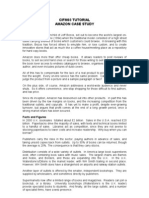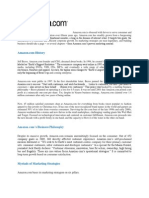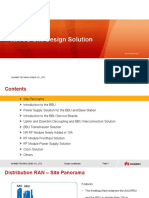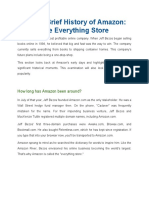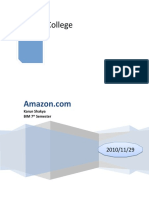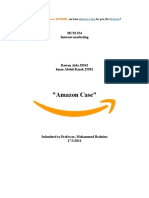Exercises: About Printers. List These Three Transaction Cost-Reduction Elements and Write A Paragraph in
Exercises: About Printers. List These Three Transaction Cost-Reduction Elements and Write A Paragraph in
Uploaded by
xsestCopyright:
Available Formats
Exercises: About Printers. List These Three Transaction Cost-Reduction Elements and Write A Paragraph in
Exercises: About Printers. List These Three Transaction Cost-Reduction Elements and Write A Paragraph in
Uploaded by
xsestOriginal Description:
Original Title
Copyright
Available Formats
Share this document
Did you find this document useful?
Is this content inappropriate?
Copyright:
Available Formats
Exercises: About Printers. List These Three Transaction Cost-Reduction Elements and Write A Paragraph in
Exercises: About Printers. List These Three Transaction Cost-Reduction Elements and Write A Paragraph in
Uploaded by
xsestCopyright:
Available Formats
Exercises
1. Companies that sell luxury goods, such as Chane!, and Vera were
reluctant to offer their products for sale on their Web sites for many years. These busi-
nesses preferred to use their Web sites to display information about their products only and
to sell their products through exclusive retail stores. Summarize the reasons these luxury
goods producers might have been hesitant to sell online and speculate why they might
have changed their thinking.
2. You have decided to buy a new color printer for your home office. You have not decided
whether an ink-jet or laser printer would be best for you. List specific activities that you
must undertake as you gather information about printer capabilities and features. Use the
Office Best Buy, and Web sites to gather
information. Write a short summary of the process you undertook to serve as a model for
others who plan to undertake a similar task.
3. Choose one of the Web sites listed in the previous question and identify three ways the
company has reduced its transaction costs by using a Web site to provide information
abOut printers. List these three transaction cost-reduction elements and write a paragraph in
which you discuss one transaction cost-reduction opportunity that you believe the company
missed.
4. Create a diagram (similar to the diagram in Figure 1-1 0) that describes the industry value
chain for a stainless steel water bottle. Identify stages of the chain in which a company
might use electronic commerce and explain how the company might use it in those stages.
5. Read the following business messages and come up with a list of words or phrases in each
message that you believe might be troublesome for automated translation software. Then
use either the Yahco! Babel Fish or the FraeTransla!icm Web site to translate the mes-
sages from English to one of the foreign languages available on that site. Translate each
message back into English. Write a short memo that compares the problems you antici-
pated with those that occurred in the automated translation. The business messages are
the following:
a. The flight has been delayed for several hours and your shipment of components will
not arrive as scheduled.
b. We would be happy to bid on your proposal; however, we vyill need the drawings of
subassembly #24 and the supervising mechanical engineer's quality control report by
next Thursday.
c. Our company offers the latest and greatest hot deals on wheels. We would love to
send you a brochure that explains why our brakes, wheels, and suspension compo-
nents will do the job for you effectively and economically.
Cases
C1. Amazon.com
In 1994, a 29-year-old financial analyst and fund manager named Jeff Bezos became intrigued
by the rapid growth of the Internet Looking for a way to capitalize on this hot new marketing
tool, he made a list of 20 products that might sell well on the Internet After some intense anal
ysis, he determined that books were at the top of that list Although Bezos liked the name
Abracadabra, he decided to call his online bookshop Amazon.com. Today, Arnazon.com has
more than 100 million customers and sells billions of dollars' worth of all types of merchandise.
The Second Wave of Global E-Business
Chapter 1
When he started, Bezos had no experience in the bookselling business, but he realized
that books had an ideal shipping profile tor online sales. He believed that many customers
would be willing to buy books without inspecting them in person and that books could be
impulse purchase items if properly promoted on a Web site. By accepting orders on its Web
site, Bezos believed that Amazon.com could reduce transaction costs in the sale to the
customer.
Several million book titles are in print at any one time throughout the world, and more than
a million of those are in English. However, the largest physical bookstore cannot stock more
than 200,000 books and carries even fewer titles because bookstores stock more than one copy
of each title. Having a wide selection was important because Bezos believed it would help cre-
ate a network economic effect People would visit Amazon.com whenever they wanted to buy a
book because it would be the most likely store (physical or online) to have a particular title. After
becoming satisfied customers, people would return to Amazon.com to buy more books and
would eventually stop looking elsewhere.
The structure of the supply side of the book business was equally important to
Amazon.com's success. Music CDs, which were second on Bezos' list, were produced by a
few major recording companies who could easily control Amazon.com's supply. In contrast,
there were a large number of book publishers, none of which held a dominant position in the
book-selling marketplace. Thus, it was unlikely that a single supplier could restrict Bezos' supply
of books or enter his market as a competitor. He decided to locate his firm in Seattle, close to a
large pool of programming talent and near one of the largest book distribution warehouses
in the world. These supply factors were important because Bezos wanted to develop efficiencies
that would allow Amazon.com to reduce transaction costs for its purchases as well as its sales
transactions.
Bezos encouraged early customers to submit reviews and ratings of books, which he
posted with the publisher's information about the book and with reviews written by Amazon.com
employees. This customer participation served as a substitute for the corner bookshop staff's
friendly advice and recommendations. Bezos saw the power of the Internet in reaching small,
highly focused market segments, but he realized that his comprehensive bookstore could not be
all things to all people. Therefore, he created a sales associate program in which Web sites
devoted to a particular topic, such as model railroading, could provide links to Amazon.com
books that related to that topic. In return, Amazon.com remits a percentage of the referred sales
to the owner of the referring site.
Although Bezos' original vision was to create an online bookstore with the world's best
selection, Amazon has moved into other product lines where opportunities for network economic
effects and transaction cost reductions looked promising. In 1998, Amazon.com began selling
music CDs and videos, first on VHS tape, and then later on DVD. More recently, Amazon added
MP3 music downloads. Today, Amazon offers thousands of products in dozens of categories.
By paying attention to every process involved in buying, promoting, selling, and shipping
consumer goods, and by working to improve each process continually, Bezos and Amazon.com
became one of the first highly visible success stories in electronic commerce. In fact,
Amazon.com now generates significant revenue by supplying other sellers of consumer goods
with the technology to sell those goods online. One of its first partnerships was with Toys"R"Us,
a company that had experienced difficulties in selling online and making deliveries on time in
the 1999 holiday shopping season. Toys"R"Us signed an agreement with Amazon.com in 2000
that placed Toys"R"Us products on the Amazon. com Web site. Amazon.com would accept the
orders on its Web site and would ship products to customers tor Toys"R"Us in exchange tor a
percentage of each sale. Amazon.com also agreed not to sell toys itself or on behalf of other
partners for whom it might provide online sales services in the future .. For example, when
more
one copy
help ere-
to buy a
title. After
Amazon agreed to sell Target products online. it could not sell Target"s toy lines on its Web site.
(Target is the third-largest toy retailer in the world. behind Wai-Mart and Toys"R"Us.)
In addition to the online sales services Amazon.com provides to Toys"R""Us, Target,
CONow, and other large companies, it provides similar seiVices to many smaller companies with
its Amazon Marketplace offering. In Amazon Marketplace, small retailers become members of
an online shopping mall on Amazon's site.
Toys"R"Us sales exceeded $300 million by 2004 on the Amazon.com site. Both Toys"R"Us
and Amazon.com benefited from the network economics effect they obtained by having toys
available for sale on Amazon.com's well-known electronic commerce site. Many small toy re-
tailers in the Amazon Marketplace program also benefited because shoppers visited the
Amazon.com site looking for toys. When a site visitor searched for a toy, the Amazon Market-
place retailers' offerings were presented on the search results page along with results from
Toys"R"Us and Amazon.com.
Required:
1. In 2004, Toys"R"Us sued Amazon.com for violating terms of the agreement between the
companies; specifically, Toys"R"Us objected to Amazon.com's permitting Amazon Market-
place retailers to sell toys. (Note: When the lawsuit was filed, Amazon Marketplace was
called "zShops.") Amazon.com responded by filing a countersuit. After more than two
years of litigation, a New Jersey Superior Court judge ruled that the agreement had been
violated by both parties. The judge ordered that the agreement be terminated and denied
both companies' claims for monetary damages. Amazon.com appealed the ruling. In
2009, an appellate court affirmed the lower court ruling but reversed the ruling on
damages, which had awarded Toys"R"Us $93 million plus interest. In June 2009, the two
companies finally agreed in an out-of-court settlement that Amazon.com would pay
damages of $51 million. Use your favorite search engine and the Web Links for
Case C1 to review the courts' findings and rulings. Prepare a report of about 200 words in
which you summarize each company's arguments and the rationale given by the judges
for their decisions. Conclude the report by stating what you believe the outcome of the
dispute should have been and why.
2. Outline the advantages and disadvantages that Amazon.com would have considered
before it made the agreement with Toys"R"Us to limit competing toy sales. In about 200
words, summarize these advantages and disadvantages, and then evaluate
Amazon.com's decision to enter such an agreement.
3. In about 200 words, outline specific recommendations you would have made to
Amazon.com in 2004 for negotiating a settlement with Toys"R"Us that would have
benefited both companies and avoided litigation.
4. In 2009, Amazon.com purchased Zappos, a highly successful shoe retailer that was
started in 1999. Many industry observers believe that the design and layout of the Zappos
Web site has been an important element in the company's success. Visit the Zappos site
and compare its layout and operation to the Amazon.com site. Determine whether
Amazon.com should fold Zappos into its Web site or keep it operating in its current form.
State and justify your position in the form of a memo of about 300 words to Amazon.com
top management.
5. In 1998, Amazon.com purchased the lntemel Movie Database for a substantial, but
undisclosed, sum. The site offers reviews of movies and information about movies, actors,
directors, and others involved in the filmmaking business. The site does not charge mem-
bership fees (except for a small area of the site reserved for people who work in the film
industry, called IMDbPro, which does not generate a substantial amount of revenue for
The Second Wave of Global E-Business
Chapter 1
Amazon.com). In about 100 words, speculate on why Arnazon.com might have purchased
this Web site and explain how it benefits from owning the site today.
Note: Your instructor might assign you to a group to complete this case and might ask you to
prepare a formal presentation of your results to your class.
C2. Hal's Woodworking
Hal Donovan started an ordinary hardware store, named Hal's Hardware in Sandusky, Ohio, in
1978. He had been working during his summer vacations from college lor a long-established
hardware store and decided he liked the business. Hal's Hardware developed an excellent rep-
utation as a friendly neighborhood store. The store managers are all active in the community
and the store regularly sponsors youth sports teams and supports local charities. When hired,
salespeople go through a comprehensive training program that includes skill training in the
areas of the store in which they will work (plumbing, electrical, power tools, flooring, garden, and
so on), and they are trained in customer service skills. As a result of this locus on service, Hal's
Hardware became a community gathering place.
Hal offers classes and workshops lor the homeowner and hobbyist three evenings each
month and regularly schedules seminars lor professional customers on weekday mornings.
Many of these workshops and seminars are underwritten and taught by manufacturers to pro-
mote their products, but an increasing number are being created by Hal's Hardware staff
members.
In recent years, Hal has become more and more worried that the business is no longer
growing. The store is lacing increasing competition from hardware chains such as Home
and lowe's. These national chains have opened many new stores, and they are larger, carry
more items, and offer lower prices on some items. The competition is fierce; lor example, Hal's
Hardware closed its lumber department because of this competition. The national chains buy
lumber in such large quantities that they can offer far lower prices. Hal was unable to earn a
profit when matching the large competitors' prices, and the lumber operations consumed a large
amount of store space.
Hal was worried that this sort of problem could develop in other departments, so he began
looking lor ways to add value to the customer experience, especially in ways that the national
chains were not willing or able to do. For example, Hal believes that most people want to try
out a new power tool in person before they spend hundreds of dollars on a purchase. Thus,
Hal's Hardware created a tool demonstration area stalled with salespeople who are experts in
power tool operation. For each major type of power tool (drills, power saws, joiners, grinding
tools, and so on), Hal created a small booklet of hints lor using that type of tool. Hal's sales-
people give these booklets to customers as free handouts. They also sell Hal's own low-cost
instructional DVDs.
Hal's Hardware currently has a Web site that includes information about the company and
some store information, such as directions to the store and hours of operation. Hal is thinking
about expanding the Web site to include online shopping. He is hoping that customers might
lind the Web site to be a useful way to order items, see whether items are in stock at the store,
and comparison shop among different brands of a particular item. Hal is also hopeful that the
Web site can reach customers who are not located near the store.
Hal has been talking with Sarah Johnson, his most senior store manager, about his idea lor
adding online sales to the Web site. Sarah has been with the company lor 20 years and has
organized a number of the classes held on Saturday afternoons in the tool demonstration area.
Alter hearing Hal's ideas, she explains that she is concerned about online competition as much
as local competition. Some of the tool manufacturing companies that supply Hal's Hardware are
talking about selling directly to customers on their Web sites. None of the major suppliers has
done this yet, but Sarah is worried that it could occur in the future. The store also faces compe-
tition from companies that sell online or through the Amazon.com Web site.
Sarah tells Hal that she's concerned that going online with their entire product line might
not make any sense because the competition for common tools is likely to be just as fierce
online as it is in the store now. She has noticed that there seems to be a solid core of custo-
mers who are interested in serious woodworking and who show up for a lot of the classes.
These customers buy some of the best, and most expensive, tools that the store sells. Many
times, she finds that she has to special order tools for these customers when they are working
on a specific project
Sarah suggests to Hal that they might want to take the business in a different direction
online and sell just the high-end specialty tools to dedicated woodworkers and cabinetmakers.
These items yield higher margins than the regular tools. Furthermore, the salespeople who Hal
has hired are eager to develop videos and instruction booklets that would appeal to this more
skilled and specialized audience. Sarah suggests that they call the new online business Hal's
Woodworking to distinguish it from the general hardware store business.
Required:
1. Conduct a SWOT analysis for the new Hal's Woodworking online business. You can use
the information in the case narrative, your personal knowledge of the retail hardware and
tool industry, and information you obtain by following the Web Links or doing independent
searches of the Web as you conduct your analysis. You should create a diagram similar
to Figure 1-12 to summarize your SWOT analysis results.
2. Based on your SWOT analysis, write a report of about 400 words that includes a sum-
mary of your assumptions and a list of recommendations for Hal's Woodworking. The
recommendations should be specific and should address the content that the Web site
should include, the features that Hal should make available on. the site, and how Hal's
Woodworking might overcome any of the weaknesses or threats you identified in the
SWOT analysis.
Note: Your instructor might assign you to a group to complete this case and might ask you to
prepare a formal presentation of your results to your class.
The Second Wave of Global
summarizes your findings, and a section of about 100 words in which you present your
conclusion.
5. Visit the Web sites of two museums. The Web Links for this exercise include a list of links
to museums, but you may use other sites if you wish. Write a report of 100 words in which
you describe the process on each site for making a donation to the museum. Evaluate how
the site's design encourages visitors to donate; for example, is it easy to find a link to a
page where you can make a donation? Does the site encourage donations throughout
the site's various pages? Provide at least one recommendation for improving each of the
two sites you selected.
6. Many real estate agents today have Web sites that list the properties they have for sale.
These agents also advertise the properties on Realtor.com and sometimes in television
ads. However, most real estate agents would tell you that personal contact provides their
most important connections with clients, potential clients, and client referral sources. Write
three paragraphs in which you briefly describe the things that real estate agents can best
accomplish through (1) their Web sites, (2) mass media advertising, and (3) personal
contact.
Cases
C1. Lonely Planet
In 1972, Tony and Maureen Wheeler were newlyweds who decided to have one last adventur-
ous travel experience before settling down. Their trip was an overland trek from London to
Australia through Asia. So many other travelers asked them about their experiences that they
sat down at their kitchen table and wrote a book titled Across Asia on the Cheap. They pub-
lished the book themselves and were surprised by how many copies they sold. More than three
decades and 60 million books later, their publishing enterprise has turned out to be one of the
most successful in history.
The Wheelers' publishing company, Lonely Planet, has grown rapidly, with typical annual
sales increases of 15 percent or more. In 2007, BBC Worldwide purchased a 75 percent own-
ership interest in the company and purchased the rest of the company's stock in 2011. Lonely
Planet TV now produces a variety of travel and documentary programs that appear on cable
networks throughout the world. As a BBC subsidiary, the company does not release sales fig-
ures, but industry analysts estimate current annual revenues to be about $110 million. Lonely
Planet publishes more than 600 titles and holds a 20 percent share of the travel guide market.
The company has more than 450 employees in its UK, U.S., French, and Australian offices
pertorming editorial, production, graphic design, and marketing tasks. Travel guide content is
written by a network of more than 200 contract authors in more than 20 countries. These
authors are knowledgeable about everything from visa regulations to hotel prices to the names
of the hottest new entertainment spots. The combined expertise of the in-house staff and the in-
country authors has kept Lonely Planet ahead of its competitors for many years.
Lonely Planet also offers travel services that include a phone card, hotel and hostel room-
booking, airplane tickets, European rail travel reservations and tickets, package tours, and travel
insurance. These services are sold by telephone and on the Lonely Planet Web site.
The Web site has won numerous awards, including the Society of American Travel Writers
Silver Award and a spot on Time magazine's "Fifty Best Web Sites" list The site was launched
in 1994 and includes an online store in which Lonely Planet publications are sold. However, the
site's main draws are its comprehensive collection of information about travel destinations and
Revenue Models_
Chapter 4
its online discussion area, the Thorn Tree, which has nearly a half million registered users. The
company has had trouble turning any of this information into a source of revenue generation.
Despite i1s excellent Web site and its use of new technologies, most of Lonely Planet's
revenues are still generated by book sales. The typical production cycle of a travel guide is
about eight months long. This is the time it takes to commission authors, conduct research,
work through several drafts of writing and editing, select photos, create the physical book, and
print it This production cycle causes new books to be almost a year out of date by the time they
are published. Only the most popular titles are revised annually. Other titles are on two-, three-,
or four-year revision cycles. The time delay in publication means that many details in the guides
are outdated or wrong; restaurants and hotels close (or move), exchange rates and visa regula-
tions change, and once-hot night spots are abandoned by fickle clientele.
Lonely Planet publications are well researched and of high quality, but the writers do not
work continually because the books are not published continually. The Web site often has infor-
mation that is more current than the published travel guides.
The site's online shop does offer some custom guides, which are parts of its existing travel
guides packaged in different ways, and it does let customers buy specific chapters from its
books, but it still is largely focused on selling books, although the site does offer PDF files that
can be downloaded to mobile devices. Lonely Planet has adopted some new technologies, but
has not used them to change its revenue model in any major way or to make basic changes in
the production of its main product, the travel guides.
Required:
1. Review the company's offerings for Apple iPhone and iPad products and for Android
smart phones (Trippy). Evaluate those products and identify opportunities for other
products or services that the company could offer for mobile devices that would take
advantage of Internet technologies (including wireless technologies for mobile devices)
and address customers' concerns about the timeliness and currency of information in
the printed travel guides.
2. Prepare a report in which you analyze the marketing channel conflicts and cannibalization
issues that Lonely Planet faces as it is currently operating. Suggest solutions that might
reduce the revenue losses or operational frictions that result from these issues.
3. Many loyal Lonely Planet customers carry their travel guides (which can be several
hundred pages thick) with them as they travel around the world. In many cases, these
customers do not use large portions of the travel guides. Also, Internet access can be a
problem for many of these customers while they are traveling. Describe a digital product
(or products) other than the PDFs of book chapters it currently offers that might address
this customer concern and also yield additional revenue for Lonely Planet Your answer
here could build on ideas that you developed in your solution to Requirement 1.
Note: Your instructor might assign you to a group to complete this case and might ask you to
prepare a formal presentation of your results to your class.
C2. Association for the Study of International Business
The Association for the Study of International Business (AS I B) is an organization of researchers,
professors, and business executives interested in the study, analysis, and promotion of busi-
ness activities beyond domestic borders. Mario DiPonetti, ASIB's executive director, has hired
you as a consultant to help him map out a future Web revenue strategy for the association.
The ASIB has about 3000 members located in countries throughout the world; however,
about half of its members are in the United States. Each member pays an annual membership
You might also like
- Amazon Operations Management Case StudyDocument11 pagesAmazon Operations Management Case StudyMarGianna Char-Kyriacou33% (3)
- Amazon's Distribution StrategyDocument3 pagesAmazon's Distribution StrategyJaya Krishna Singu0% (1)
- Amazon Case StudyDocument5 pagesAmazon Case StudyCarlota Nicolas Villaroman100% (3)
- Cuegis Essay On AmazonDocument3 pagesCuegis Essay On AmazonKolimarla Sanchit Jaikumar75% (4)
- Marketing Strategies of AmazonDocument8 pagesMarketing Strategies of AmazonPriya JamadNo ratings yet
- Analysis PDFDocument16 pagesAnalysis PDFRachelJosefNo ratings yet
- JULLIE CARMELLE H. CHATTO - Management 4N - Activity 2Document2 pagesJULLIE CARMELLE H. CHATTO - Management 4N - Activity 2JULLIE CARMELLE H. CHATTONo ratings yet
- 19A 5G Site Design SolutionDocument93 pages19A 5G Site Design Solutionmuhieddine alqousi0% (1)
- Russian-English Dictionary of Idioms PDFDocument992 pagesRussian-English Dictionary of Idioms PDFVaidotasMakarijusRimeikis88% (8)
- AmazonDocument2 pagesAmazonankit singhNo ratings yet
- A Ceo J B .: Mazon Founder AND EFF EzosDocument19 pagesA Ceo J B .: Mazon Founder AND EFF EzosYasmin khan100% (1)
- AmazonDocument11 pagesAmazonmanisha0791No ratings yet
- Amazon Case StudyDocument2 pagesAmazon Case Studymr singh100% (1)
- Amazon Studio Before CrowdsourcingDocument6 pagesAmazon Studio Before CrowdsourcingMamet BeyliNo ratings yet
- AmazonDocument25 pagesAmazonusmjiamancunyinNo ratings yet
- A Very Brief History of Amazon - The Everything StoreDocument5 pagesA Very Brief History of Amazon - The Everything StoreRedwan RythmNo ratings yet
- History: Further InformationDocument3 pagesHistory: Further InformationPashang VaidNo ratings yet
- Amazon-Sistemas de InformaciónDocument9 pagesAmazon-Sistemas de InformaciónIssac De La CadenaNo ratings yet
- VBCC MiniCase - Amazon Omni ChannelDocument18 pagesVBCC MiniCase - Amazon Omni ChannelThu Thao NguyenNo ratings yet
- Prime College: Karun Shakya Bim 7 SemesterDocument6 pagesPrime College: Karun Shakya Bim 7 SemesterKarunNo ratings yet
- Cases Text Book - 45-57Document13 pagesCases Text Book - 45-57NAUFA AFZUNI VIOLANo ratings yet
- Mis - Case Study - Joy ChavezDocument18 pagesMis - Case Study - Joy ChavezJoyae ChavezNo ratings yet
- The Genius of Amazon: How Jeff Bezos and Online Shopping Changed the WorldFrom EverandThe Genius of Amazon: How Jeff Bezos and Online Shopping Changed the WorldNo ratings yet
- Infinix Group MGT 330 Semester ProjectDocument14 pagesInfinix Group MGT 330 Semester ProjectTanmoy Ahsan100% (1)
- Amazon TugsDocument9 pagesAmazon TugsRainhard SaliamaNo ratings yet
- Case AmazonDocument9 pagesCase AmazonMuhammadZafarWahlaNo ratings yet
- Marketing Strategies of AmazonDocument12 pagesMarketing Strategies of AmazonShuja Ahmed SiddiquiNo ratings yet
- AmazonDocument33 pagesAmazonshradha Thakare100% (6)
- "Amazon Case": MCM 354 Internet MarketingDocument11 pages"Amazon Case": MCM 354 Internet Marketingr_aidaNo ratings yet
- 5 Amazon CaseDocument2 pages5 Amazon CaseLeah Lou CamadduNo ratings yet
- What Business Is Amazon inDocument5 pagesWhat Business Is Amazon inAilin MendozaNo ratings yet
- Management: Abhishek Mittal 61 Deeksha Grover 70 Kritika Sehgal 78Document19 pagesManagement: Abhishek Mittal 61 Deeksha Grover 70 Kritika Sehgal 78abhi15mittalNo ratings yet
- Amazon Case StudyDocument3 pagesAmazon Case StudyGökhan OğuzNo ratings yet
- Case Study 3 - Amazon - in Surviving in A JungleDocument15 pagesCase Study 3 - Amazon - in Surviving in A JungleNguyễn Thị Phong NhãNo ratings yet
- AmazonDocument46 pagesAmazonJing Tiong FangNo ratings yet
- A Study On Amazon CompanyDocument18 pagesA Study On Amazon CompanyVijay KumarNo ratings yet
- Rukmini Devi Institute of Advanced StudiesDocument50 pagesRukmini Devi Institute of Advanced StudiesMicky GautamNo ratings yet
- 10 CompaniesDocument368 pages10 CompaniesGerlyn RodriguezNo ratings yet
- History ofDocument9 pagesHistory ofEngr Qamar Fahim KhanNo ratings yet
- A Strategic Analysis ofDocument6 pagesA Strategic Analysis ofAjay Manchanda67% (3)
- AmazonDocument35 pagesAmazonRakesh Kolasani Naidu89% (27)
- Case AmazonDocument26 pagesCase AmazonNirmalya Fadikar100% (19)
- AmazonDocument10 pagesAmazonraunak singhNo ratings yet
- AmazonDocument17 pagesAmazonPawan Kumar AaryaNo ratings yet
- Management Information Systems: CasesDocument78 pagesManagement Information Systems: CasesNishit ChouhanNo ratings yet
- Amazon Company-Wps OfficeDocument2 pagesAmazon Company-Wps OfficeAldiasa PangestuNo ratings yet
- CHPTR 17Document3 pagesCHPTR 17hayatun nufusNo ratings yet
- Amazon Case StudyDocument3 pagesAmazon Case StudyThiss PersonNo ratings yet
- Would You Be Interested in Buying Only Books From Amazon? Give Three ReasonsDocument2 pagesWould You Be Interested in Buying Only Books From Amazon? Give Three ReasonsjhafjfNo ratings yet
- World ofDocument33 pagesWorld ofAnkit SachdevaNo ratings yet
- E-Tailing Case Study - AMAZONDocument3 pagesE-Tailing Case Study - AMAZONIssa0% (1)
- Amazon 555Document12 pagesAmazon 555shanNo ratings yet
- Economics Project-2: Amazon Which Managed The Inventory of Individuals and Small Companies Selling TheirDocument3 pagesEconomics Project-2: Amazon Which Managed The Inventory of Individuals and Small Companies Selling TheirAbhimanyu KironNo ratings yet
- Amazon Part 2Document5 pagesAmazon Part 2Ayzed Bin AbrarNo ratings yet
- AmazonDocument12 pagesAmazonHassaan Qazi100% (1)
- AMAZONDocument71 pagesAMAZONAshutosh Katiyar100% (1)
- Amazon CaseDocument5 pagesAmazon CaseIman Abdul RazekNo ratings yet
- case-study-Amazon.comDocument8 pagescase-study-Amazon.comBaldeep Kaur100% (1)
- AmazonDocument3 pagesAmazondesikudi9000No ratings yet
- Amazon FBA 2020: How to Sell on Amazon Step by Step Including Introductions to Wholesale, Private Label, Arbitrage, Used Books and Avoiding Account SuspensionFrom EverandAmazon FBA 2020: How to Sell on Amazon Step by Step Including Introductions to Wholesale, Private Label, Arbitrage, Used Books and Avoiding Account SuspensionNo ratings yet
- Labor Law I - Assignment Art 12-39Document2 pagesLabor Law I - Assignment Art 12-39Gianna Cantoria100% (1)
- Classical Physics Prof. V. Balakrishnan Department of Physics Indian Institute of Technology, Madras Lecture No. # 38Document27 pagesClassical Physics Prof. V. Balakrishnan Department of Physics Indian Institute of Technology, Madras Lecture No. # 38Anonymous 8f2veZfNo ratings yet
- Business PlanDocument22 pagesBusiness PlanRachelle Anne Mojica PalecpecNo ratings yet
- Civil Military RelationsDocument13 pagesCivil Military RelationsKhadijaSaleemNo ratings yet
- Mamma Mia OKDocument2 pagesMamma Mia OKFerchaNo ratings yet
- English Summer Vacation Homework For Class 5Document7 pagesEnglish Summer Vacation Homework For Class 5g3wgvd33100% (1)
- Rollan Rodriguez Credentials 01Document72 pagesRollan Rodriguez Credentials 01Rollan RodriguezNo ratings yet
- Satyanarayana Vratam Venkateswara Swamy Deeparadhana: Auspicious Time For GruhapravesamDocument2 pagesSatyanarayana Vratam Venkateswara Swamy Deeparadhana: Auspicious Time For GruhapravesamRaghu ChNo ratings yet
- Learning Organization Feedback On Scores: 101-120 World ClassDocument6 pagesLearning Organization Feedback On Scores: 101-120 World Classdarff45No ratings yet
- Greene Et Al 2016Document76 pagesGreene Et Al 2016Valentina Muñoz OyarzúnNo ratings yet
- Turner November 11, 2013 Letter To Richard Beeson and Board of Regents PDFDocument3 pagesTurner November 11, 2013 Letter To Richard Beeson and Board of Regents PDFMarkingsonCaseNo ratings yet
- DAIKIN RA Price List 2020: Wifi Wifi WifiDocument1 pageDAIKIN RA Price List 2020: Wifi Wifi WifiAlamNo ratings yet
- Basic MikrotikDocument63 pagesBasic MikrotikMarko KalabicNo ratings yet
- Shipping Label ReceiptDocument1 pageShipping Label Receiptnadven1No ratings yet
- 18.1-FAMILY ENTEROBACTERIACEAE and TESTSDocument2 pages18.1-FAMILY ENTEROBACTERIACEAE and TESTSJesette KhoNo ratings yet
- Modal Vs Functional Harmony + Various Q&A About ModesDocument25 pagesModal Vs Functional Harmony + Various Q&A About ModesAnonymous TBwEsioW100% (1)
- Pam 8320Document11 pagesPam 8320Darko GoracinskiNo ratings yet
- (ICT) Exercise Solution 5 ChaptersDocument11 pages(ICT) Exercise Solution 5 ChaptersApp CloudNo ratings yet
- SRI LANKA Why Are The Police Allowed and Encouraged To LieDocument3 pagesSRI LANKA Why Are The Police Allowed and Encouraged To LieThavamNo ratings yet
- Russell Latona v. Prison Health Ser Inc, 3rd Cir. (2010)Document9 pagesRussell Latona v. Prison Health Ser Inc, 3rd Cir. (2010)Scribd Government DocsNo ratings yet
- Nokia Case Study by Jayson NazarenoDocument5 pagesNokia Case Study by Jayson NazarenoJAYSON B NAZARENONo ratings yet
- (Lib24.vn) De-Thi-Vao-10-Mon-Tieng-Anh-Thpt-Chuyen-Thai-Binh-2015-2016-Co-Loi-GiaiDocument13 pages(Lib24.vn) De-Thi-Vao-10-Mon-Tieng-Anh-Thpt-Chuyen-Thai-Binh-2015-2016-Co-Loi-GiaiHồ Gia NhiNo ratings yet
- Business Studies PDFDocument196 pagesBusiness Studies PDFvineet ButolaNo ratings yet
- Httpsstatic - Careers360.mobimediauploadsfroala EditorfilesAccounting For Branches Including Foreign Branches - PDF 2Document90 pagesHttpsstatic - Careers360.mobimediauploadsfroala EditorfilesAccounting For Branches Including Foreign Branches - PDF 2Dipen AdhikariNo ratings yet
- ESSAYDocument1 pageESSAYlester valmoresNo ratings yet
- Vacancy Circular For Deputation of UDCDocument14 pagesVacancy Circular For Deputation of UDCAMOL V SULENo ratings yet
- Running Head: Kevin Mitnick: From Black Hat To White Hat 1Document19 pagesRunning Head: Kevin Mitnick: From Black Hat To White Hat 1jean grangerNo ratings yet
- Desaster Research at The CrossroadsDocument26 pagesDesaster Research at The CrossroadsGiselly SantiagoNo ratings yet


